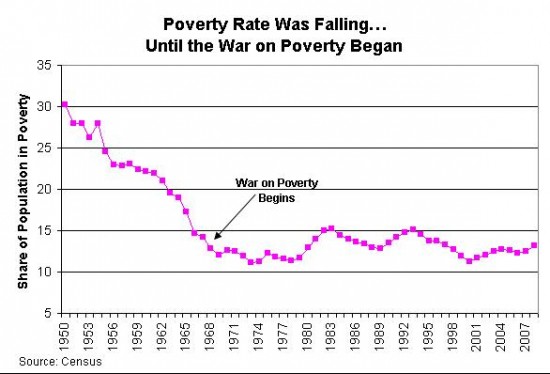The Failure of the “War on Poverty” in One Picture

Source of chart: Jonathan Hoenig (@JonathanHoenig), Chicago, IL, based on U.S. Census data
The poverty rate in the United States fell by half from 1950 to the start of the “War on Poverty.” And it was on track to continue falling. But after the “War on Poverty” programs kicked in, the poverty rate has been stuck in a narrow corridor.
The lesson: Despite good intentions, statist redistribution programs to “help the poor” lead to multigenerational dependency and shrinking opportunities and incentives for low-skill individuals to enter the workforce, increase their skills, and move up the income ladder.
On the other hand, steady private investment in physical and human capital within a secure system of private property rights (which minimizes government corruption and exploitation) results in self-sustaining prosperity, which enables poor people to take advantage of opportunities and permanently lift themselves out of poverty.
Prior to the “War on Poverty,” the post-1950 U.S. economy wasn’t a capitalist nirvana, but it did benefit the poor much more than after The Great Society programs. The numbers speak for themselves.


















